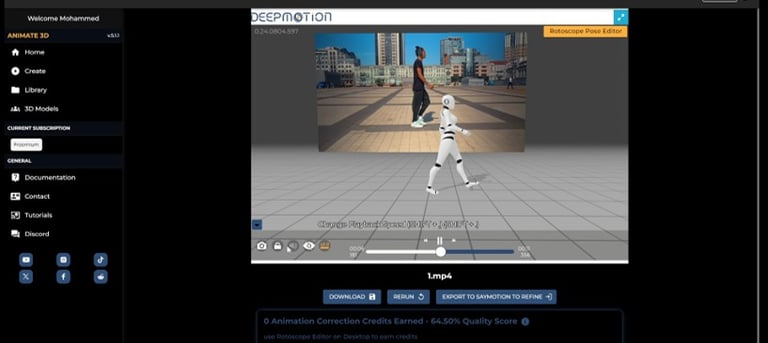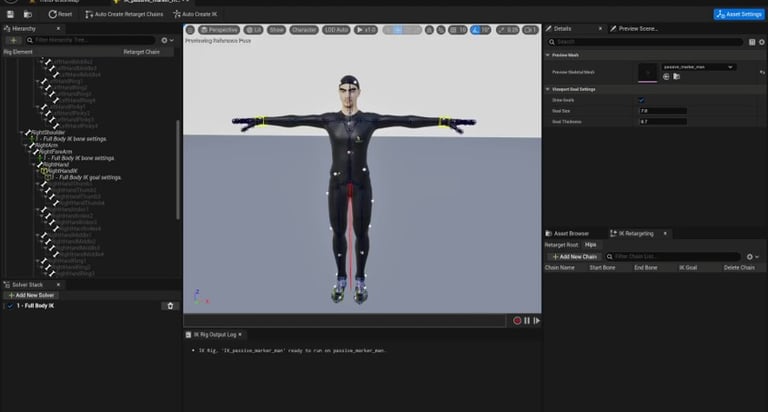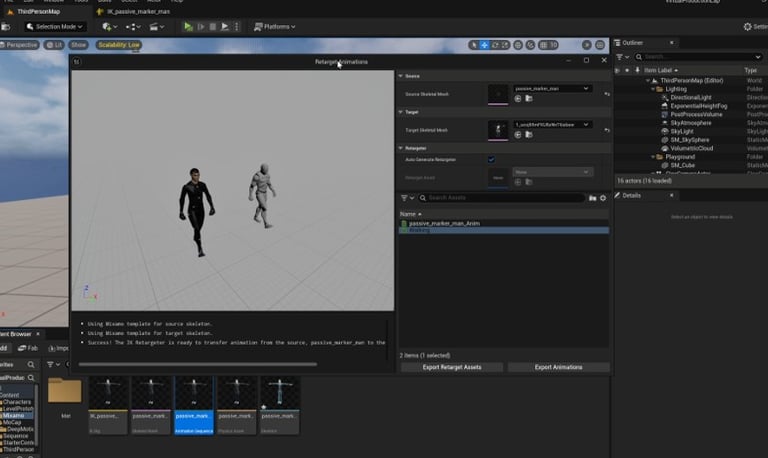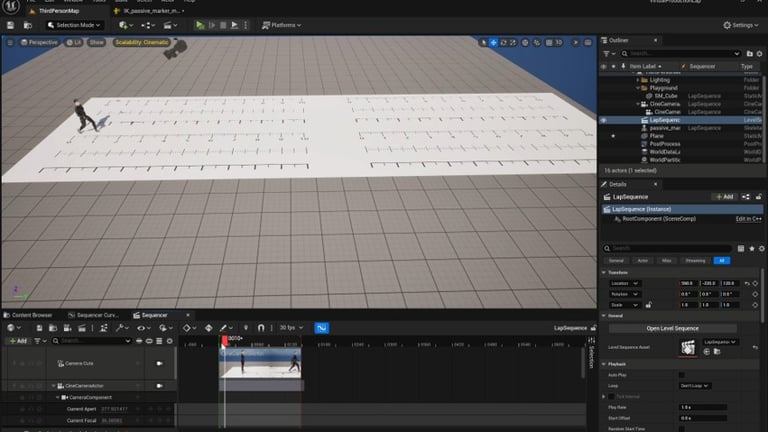Evaluating AI-Powered Motion Capture Systems Under Challenging Conditions
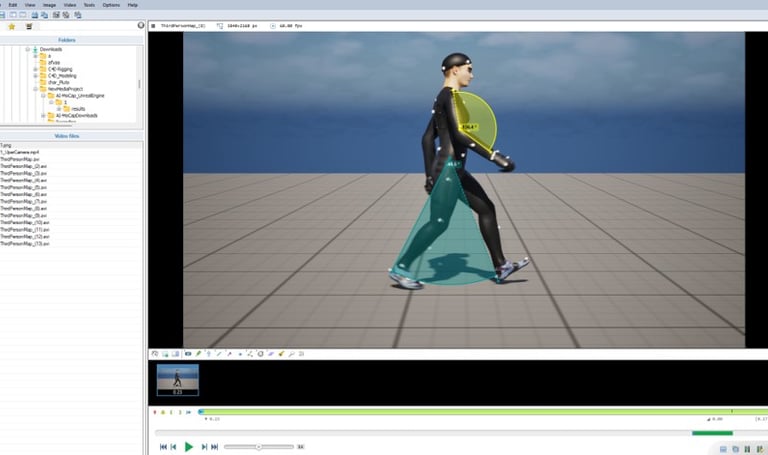

Selecting Appropriate Test Samples
As part of ongoing research to evaluate the performance of AI-powered motion capture technologies, a specialized test was designed incorporating realistic challenges. The sample video was deliberately selected to include three simultaneous variables that pose significant challenges for motion tracking systems:
A person moving at normal speed (natural movement)
A moving camera tracking the subject
A non-uniform background containing diverse elements
The purpose of selecting this particular sample was to assess the efficiency of motion capture systems under conditions that simulate real production environments, beyond the ideal conditions found in specialized studios.
Processing and Analysis Methodology
Phase One: Initial Video Processing
The video was uploaded to the DeepMotion platform for motion capture processing. Despite the challenges presented by camera movement and non-uniform background, initial results showed good performance without visible errors. The overall accuracy and quality of the capture will be determined in the final analysis.
Phase Two: Model Setup in Unreal Engine
This phase included:
Uploading the marker-equipped model to Unreal Engine
Implementing IK Rigging to prepare the skeletal structure and joints
Configuring the model to properly receive motion capture data from DeepMotion
Phase Three: Data Retargeting
Retargeting was performed within Unreal Engine, where:
Motion data was transferred from the DeepMotion model
The data was applied to the marker-equipped model to ensure accurate animation
Phase Four: Environment Calibration
Precise movement analysis required accurate environmental calibration through:
Adjusting the environment size to match the model's movement
Adding a surface with texture containing precise measurements
Using these measurements to align walking speed with distance traveled
Ensuring accurate calculations for motion adjustments
Phase Five: Kinematic Analysis
The model was uploaded to Kinova software for analysis:
Studying the similarity of movement to human motion
Measuring foot and hand flexion angles
Analyzing movement accuracy in terms of speed and repetition
Focusing on kinematic aspects resembling human movement
Phase Six: Comprehensive Evaluation
The final analysis included:
Precise measurement of foot and hand flexion angles
Studying movement accuracy in terms of speed and repetition
Analyzing multiple aspects such as speed, balance, incline, stride length, and rhythm
Comparing results with other systems to determine the accuracy of motion capture data
Conclusion
This methodical process demonstrates the importance of selecting test samples that present realistic challenges for evaluating the performance of AI-based motion capture systems. By assessing these systems under deliberately difficult conditions, a better understanding of their capabilities and limitations in real production environments can be obtained.
Preliminary results indicate that DeepMotion technology is capable of handling challenges such as camera movement and complex backgrounds, but comprehensive analysis will reveal the true accuracy and strengths and weaknesses of this technology.
